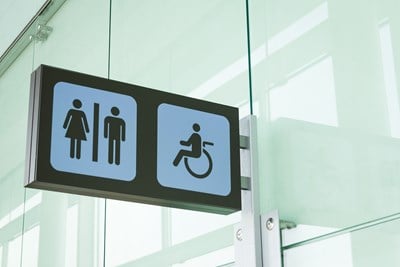If you suffer from incontinence, the supplies you need to keep the condition managed can become expensive. While some private insurance plans will help cover these costs, Medicaid and Medicare can be a little bit more tricky when it comes to medical supplies and prescription costs. Here’s a look at what incontinence products you can find coverage for through Medicaid and Medicare.
Medicaid Coverage and Incontinence
Medicaid benefits and requirements vary from state to state, which makes it difficult to figure out exactly what you qualify for. On the bright side, most Medicaid plans do cover prescription costs with little or no copay on medications. States that do not provide coverage through Medicaid for incontinence products may have additional programs to help cover medical equipment costs to help pay for these supplies.
When Medicaid does provide coverage for incontinence supplies, the patient needs a prescription diagnosing incontinence as a primary or secondary medical condition. Additionally, it may be necessary for that prescription to lay out exactly what supplies are needed, how long they will be needed, the quantity needed, and how frequently the patient will need to refill. Your state may also have a particular retailer or supplier you are required to purchase incontinence products from. For example, in Michigan supplies must be received from Priority Health Medicaid providers.
Other states require the diagnosis by a doctor but then only provide a limited amount, requiring medical authorization for more. Most states will not provide products for children younger than 4, as this is considered a necessity of childhood rather than a medical issue. Other requirements that may need to be met include bladder training before opting for incontinence products. Supplies generally include diapers, liners, incontinence pants, and/or sideless undergarments. Your state Medicaid office can help you figure out exactly what you qualify for; your health care provider may as well.
Medicare Coverage and Incontinence
Medicare has very different coverage from Medicaid. Medicare is intended for older adults, and is composed of four parts, A-D. Of these, Part D corresponds to prescription coverage. f you have original Medicare, Parts A and B, this will not be sufficient to get any help, even with a copay, for any prescription costs you might have, incontinence or otherwise.
Original Medicaid (which provides limited coverage for most inpatient care through Part A, and doctor visits through Part B) only covers particular types of medical equipment, and incontinence supplies are not a part of this. Part C, Medicare Advantage, is a way to get additional Medicare coverage that is not included in the original (such as dental and vision care). This coverage comes from private insurance companies, like AARP and Kaiser Permanente, and requires an additional monthly premium on top of your Part B payment.
MediGap, or Medicare Supplement, plans only provide coverage offered by Original Medicare, just in different ways (i.e. smaller copays or different premiums), so it will not offer incontinence supply coverage either. Make sure incontinence supplies are included in your plan before choosing a Medicare Advantage plan if you have a diagnosed incontinence issue. Remember that to receive these benefits requirements may be similar to Medicaid.



